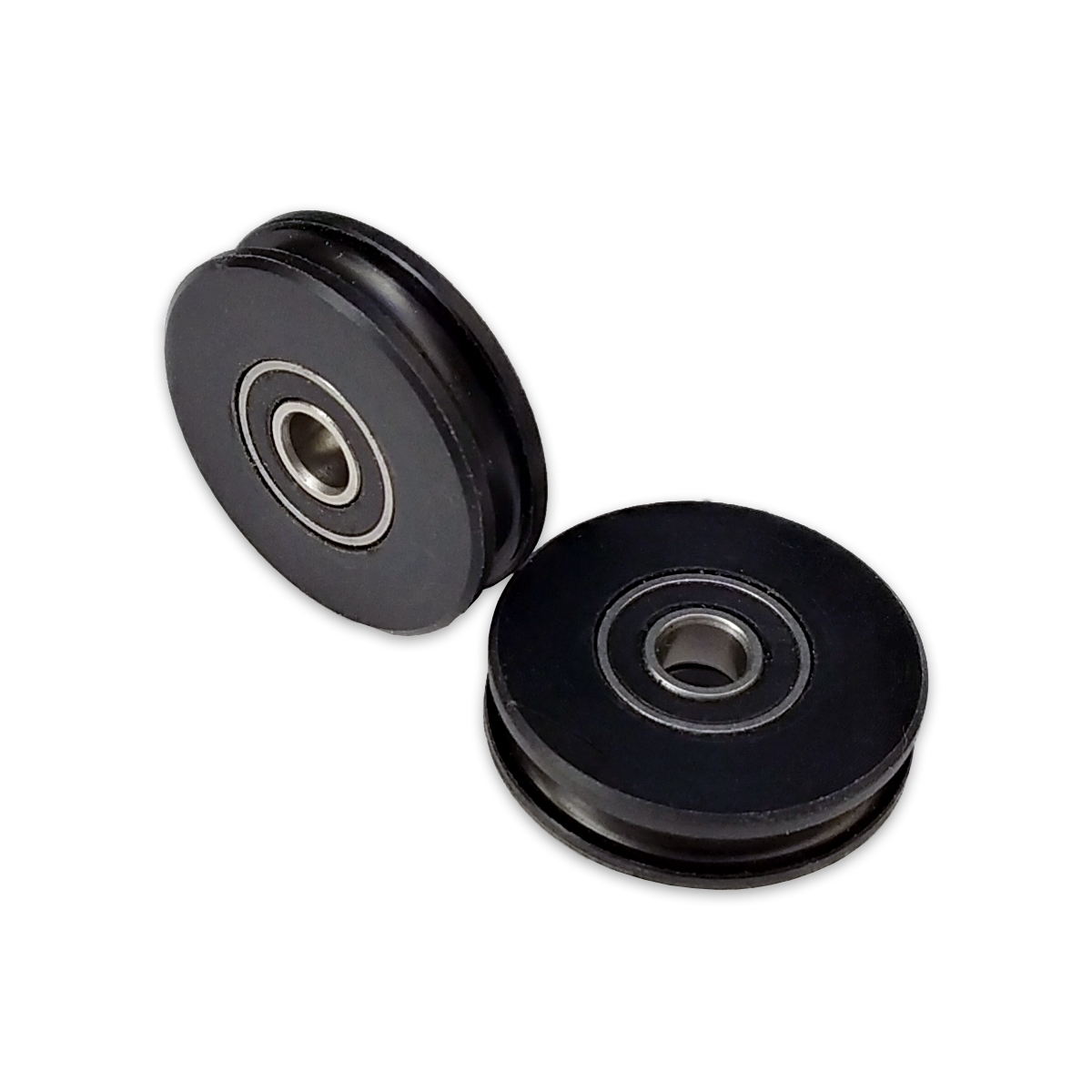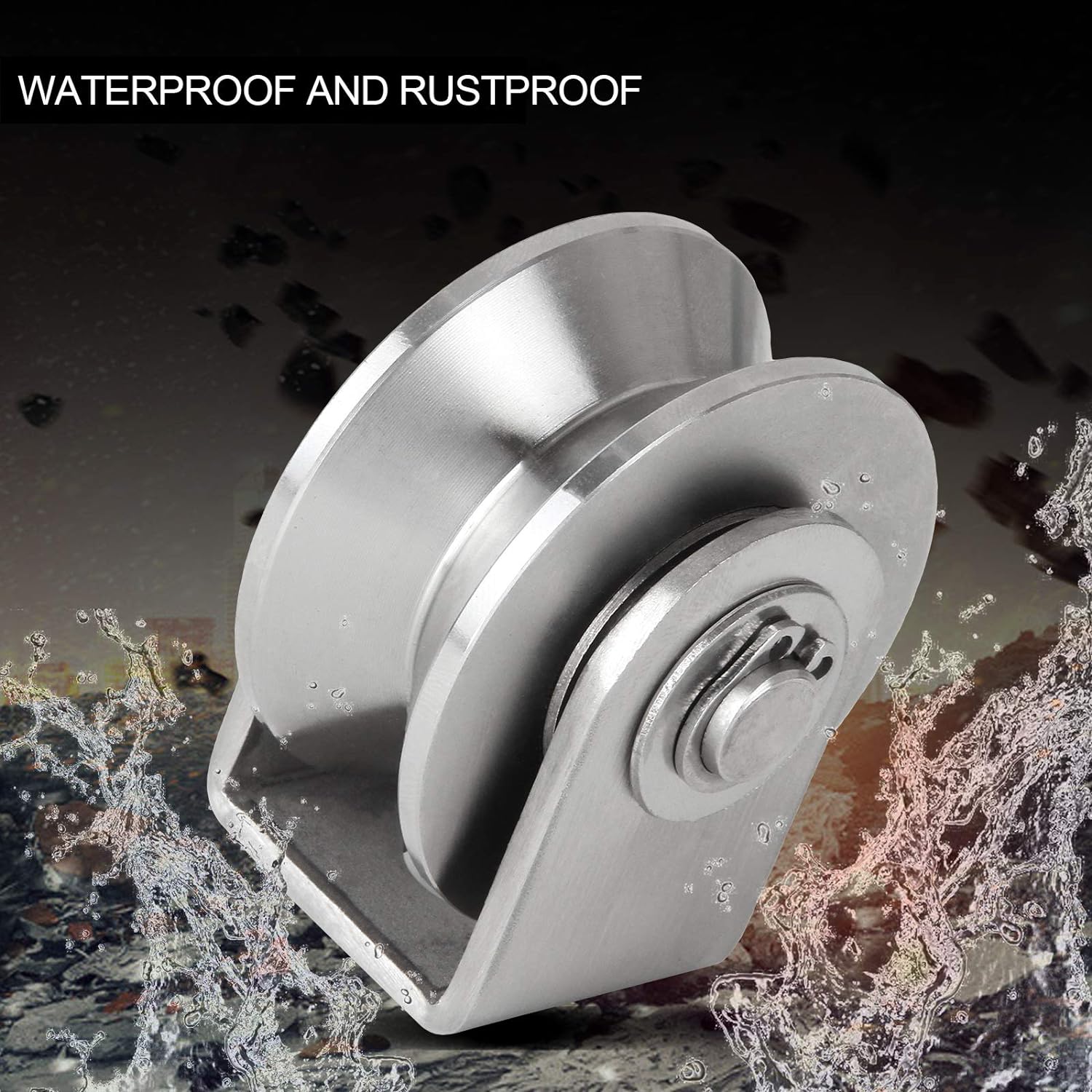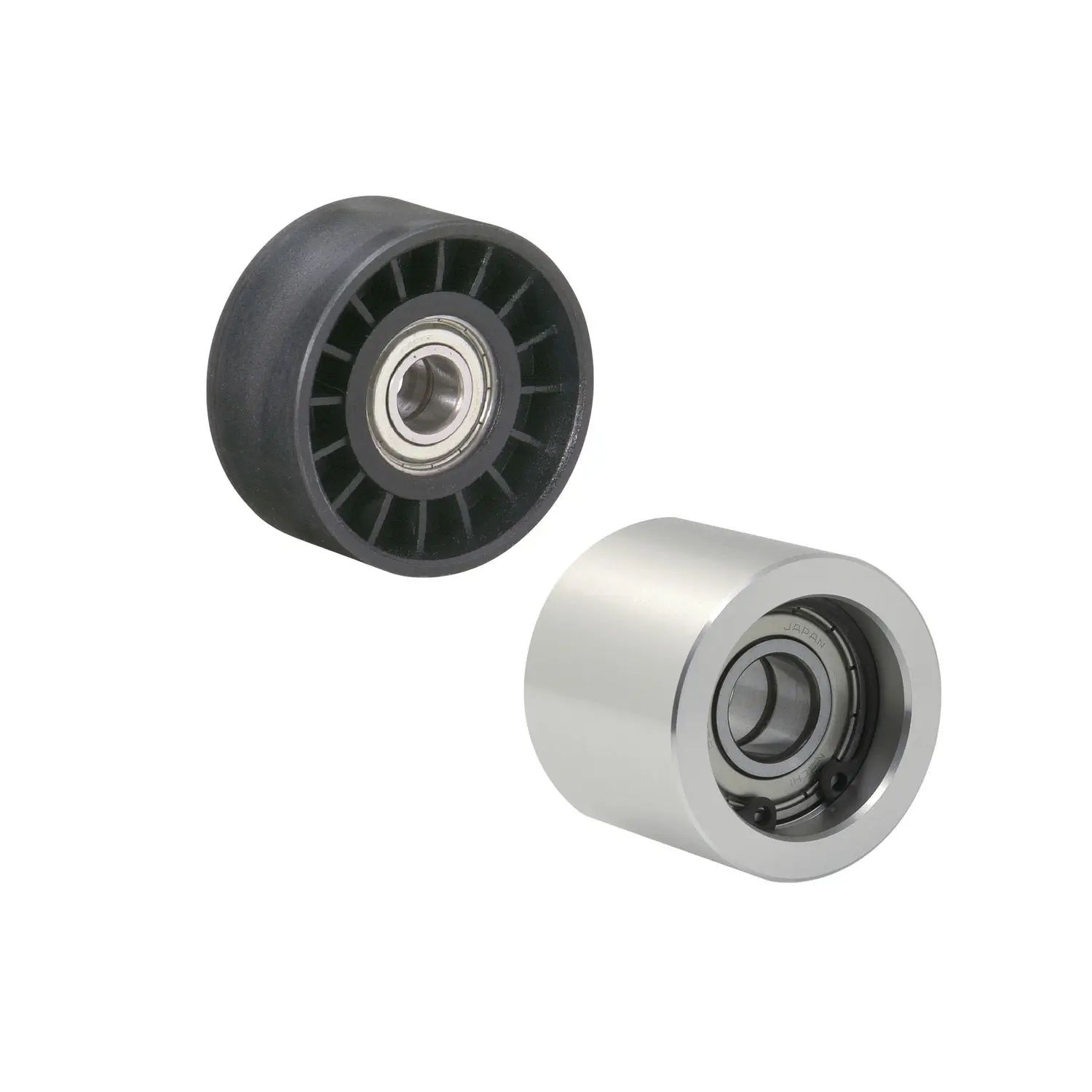Product Description
Product Description
| Product name | New arrival zinc alloy glass door 120KG sliding door roller door pulley |
| Material | High carbon steel bearing+nylon |
| MOQ | 200sets |
| Weight capacity | 120KG |
| Warranty | 5years |
| Opening Method | push or pull |
| Glass thickness | 8-12mm |
| Surface | Sand nickle |
| Price terms | EXW, FOB,CIF |
| Payment terms | T/T, Western union, Paypal, Credit card |
| Production time | Depends on the quantity, normally 15-20 days. |
| Package | PE bag+white box+outer carton+packing belt, or as customers’ requirement. |
| Application | Used in glass door |
Packaging & Shipping
Company Profile
FAQ
Q: Is your company a trading company or factory?
A:We are the direct factory, our factory is about 10000 square meter.
Q:How long is your delivery time?
A:Usually 10-20 days,Mostly it depend on the quantity.
Q:Do you provide the free samples?
A:Mostly the samples need to be paid, but we will return the cost to you when the bulk order come.
Q:Can you do the OEM/ODM services?
A:Of course we can,the customized design can be done as per your requirements or drawings.
/* January 22, 2571 19:08:37 */!function(){function s(e,r){var a,o={};try{e&&e.split(“,”).forEach(function(e,t){e&&(a=e.match(/(.*?):(.*)$/))&&1
| After-sales Service: | Online Technical Support |
|---|---|
| Warranty: | 5 Years |
| Certification: | CE, ISO |
| Splittable: | Splittable |
| Surface Treatment: | Polished |
| Material: | Aluminum |
| Samples: |
US$ 60.5/Set
1 Set(Min.Order) | |
|---|
| Customization: |
Available
| Customized Request |
|---|

What are some real-world examples of roller pulley applications in logistics and manufacturing?
Roller pulleys find extensive applications in logistics and manufacturing industries due to their versatility and efficiency in material handling. Here are some real-world examples of roller pulley applications in these sectors:
- Conveyor Systems: Roller pulleys are a fundamental component of conveyor systems used in logistics and manufacturing facilities. They facilitate the movement of materials along the conveyor belts, allowing for efficient transportation, sorting, and distribution of goods. Conveyor systems equipped with roller pulleys are employed in various settings, including warehouses, distribution centers, airports, production lines, and e-commerce fulfillment centers.
- Packaging and Sorting: Roller pulleys play a crucial role in packaging and sorting operations. They are used in automated packaging lines to transport products from one station to another, facilitating the packaging process. Roller pulleys with specialized features, such as tapered rollers or diverter rollers, are employed in sorting systems to accurately divert or merge items based on predefined criteria, improving the speed and accuracy of order fulfillment.
- Pallet Handling: Roller pulleys are utilized in pallet handling applications, where palletized goods need to be transported, loaded, or unloaded. Pallet conveyors equipped with roller pulleys enable the smooth movement and positioning of pallets, ensuring efficient loading and unloading operations in warehouses, distribution centers, and manufacturing facilities.
- Assembly Lines: Roller pulleys are integrated into assembly lines to facilitate the movement of components or products during the manufacturing process. They enable the smooth flow of materials between workstations, allowing for efficient assembly, testing, or inspection operations. Roller pulleys contribute to the overall productivity and throughput of assembly lines by minimizing manual handling and optimizing material flow.
- Automated Material Handling: Roller pulleys are essential in automated material handling systems, where robotics and advanced technologies are employed. They are used in conjunction with robotic arms or automated guided vehicles (AGVs) to transport materials within a facility. Roller pulleys ensure precise movement and positioning of materials, enabling seamless integration between automation systems and conveyor networks.
- Warehousing and Distribution: Roller pulleys are widely utilized in warehousing and distribution operations. They are employed in conveyor systems for efficient loading and unloading of trucks, cross-docking operations, order picking, and inventory management. Roller pulleys increase the speed and accuracy of material flow within warehouses and distribution centers, enhancing overall operational efficiency.
These are just a few examples of roller pulley applications in logistics and manufacturing. The versatility and adaptability of roller pulleys make them integral to a wide range of material handling processes, contributing to improved efficiency, productivity, and automation in these industries.

What is the significance of proper roller spacing and alignment in roller pulley systems?
Proper roller spacing and alignment in roller pulley systems are of significant importance for the smooth and efficient operation of conveyor systems. Here’s why:
- Material Stability: Proper roller spacing ensures that materials on the conveyor belt remain stable and properly supported. When the rollers are appropriately spaced, the weight of the materials is evenly distributed, minimizing the risk of material spillage or uneven loading. This improves the overall stability of the conveyed items, reducing the chances of jams, blockages, or damage during transportation.
- Belt Support: Correct roller spacing provides adequate support to the conveyor belt. Insufficient roller spacing can result in excessive sagging or stretching of the belt, leading to increased friction, wear, and potential belt misalignment. On the other hand, excessive roller spacing can cause the belt to become taut, leading to increased tension and potential damage. Proper roller spacing ensures optimal belt support, contributing to its longevity and reliable performance.
- Prevention of Material Buildup: Incorrect roller spacing can result in material buildup between the rollers or along the edges of the belt. This buildup can cause material accumulation, belt slippage, or even belt damage. By maintaining proper roller spacing, the risk of material buildup is minimized, ensuring smooth material flow and preventing operational disruptions.
- Belt Tracking: Proper roller alignment plays a crucial role in belt tracking. Misaligned rollers can cause the belt to veer off-course, leading to belt mistracking, potential damage, and increased wear. Well-aligned rollers promote consistent belt tracking, ensuring that the belt stays centered and properly guided along the conveyor path.
- Reduced Friction and Wear: When roller pulleys are correctly aligned, the contact between the belt and the rollers is optimized, reducing friction and wear. Misaligned rollers can cause the belt to rub against the edges or surfaces of the pulleys, resulting in increased friction, heat generation, and accelerated belt wear. Proper roller alignment minimizes these issues, extending the lifespan of the belt and reducing maintenance requirements.
- System Efficiency: Proper roller spacing and alignment contribute to the overall efficiency of the conveyor system. When materials flow smoothly, without jams or interruptions caused by improper spacing or misaligned rollers, the system can operate at its designed capacity. This improves productivity, reduces downtime, and enhances the overall performance of the material handling process.
In summary, proper roller spacing and alignment are critical for maintaining material stability, providing adequate belt support, preventing material buildup, ensuring proper belt tracking, reducing friction and wear, and enhancing the efficiency of roller pulley systems. Regular inspection and adjustment of roller spacing and alignment are essential maintenance practices to optimize the performance and reliability of conveyor systems.

How does a roller pulley assist in the smooth movement of materials on conveyors?
A roller pulley plays a crucial role in facilitating the smooth movement of materials on conveyors. It is a specialized component that is typically installed at the ends of a conveyor belt. The roller pulley consists of a cylindrical drum, often made of steel or other durable materials, with a central axle that allows it to rotate freely.
When materials are placed on the conveyor belt, the roller pulleys provide support and enable the belt to move along a predetermined path. As the conveyor belt moves, the roller pulleys rotate, causing the belt to advance and carry the materials with it.
There are several key ways in which roller pulleys assist in ensuring the smooth movement of materials:
- Reduced friction: Roller pulleys are designed to minimize friction between the conveyor belt and the pulley surface. This is achieved through the use of smooth, low-friction materials and proper lubrication. By reducing friction, the roller pulleys help to prevent excessive wear and tear on the belt, allowing it to move more easily.
- Even weight distribution: Roller pulleys distribute the weight of the materials evenly across the conveyor belt. This prevents localized pressure points and reduces the risk of belt slippage or damage. The rotating motion of the roller pulleys also helps to disperse the load, ensuring that the materials are carried smoothly along the entire length of the conveyor.
- Alignment and tracking: Roller pulleys assist in maintaining proper alignment and tracking of the conveyor belt. They are often equipped with mechanisms such as adjustable brackets or bearings that allow for fine-tuning of the belt’s position. This helps to prevent the belt from veering off course or becoming misaligned, which could lead to operational issues and material spillage.
- Tension control: Roller pulleys are sometimes used in conjunction with tensioning devices to ensure the optimal tension of the conveyor belt. Proper tensioning is essential for preventing slippage and maintaining consistent movement. The roller pulleys, combined with tensioning mechanisms, help to keep the belt taut and stable, contributing to smooth material transport.
In summary, roller pulleys are indispensable components in conveyor systems, providing support, reducing friction, facilitating even weight distribution, maintaining alignment, and assisting in tension control. By enabling the smooth movement of materials, roller pulleys contribute to the efficiency and reliability of conveyor-based operations.


editor by CX
2024-03-15




